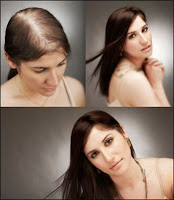 In the UK, it is calculated that roughly 10 million men and 8 million women are affected by some sort of hair loss and undergo hair transplant. Around the world, hair has for hundreds of years been used to denote status, wealth, and age. Even though powdered wigs may be out of fashion these days, for numerous individuals the hair makes men and their hairstyle, the defining aspect of their image. From a punk rocker with jagged black hair and colorful streaks to the businessman with a powerful perfect coif, hair lets people around us know who we are in an instant. It can also inform people about things we perhaps would rather they didn’t know; after all, greying and balding can betray our age to those around us.
In the UK, it is calculated that roughly 10 million men and 8 million women are affected by some sort of hair loss and undergo hair transplant. Around the world, hair has for hundreds of years been used to denote status, wealth, and age. Even though powdered wigs may be out of fashion these days, for numerous individuals the hair makes men and their hairstyle, the defining aspect of their image. From a punk rocker with jagged black hair and colorful streaks to the businessman with a powerful perfect coif, hair lets people around us know who we are in an instant. It can also inform people about things we perhaps would rather they didn’t know; after all, greying and balding can betray our age to those around us.Hair transplant UK costs vary from procedure to procedure, patient to patient, and surgeon to surgeon since the price of your individual hair transplant will depend upon the type of surgery you choose, the extent of your hair loss, and the surgeon’s pay scale.
There are typically three types of hair transplant UK surgeries to choose from: FUE, micrografting, and strip harvesting.
Follicular Unit Extraction (FUE) is the most expensive as each individual follicular unit must be extracted by hand by the surgeon him/herself. Typical FUE sessions will be around £7,000, but you may be required to undergo multiple surgeries to obtain enough hairs for your desired look so you may be spending upwards of £20,000.
Micrografting is slightly less expensive of the hair transplant uk as it is less exact. You will pay approximately £2-5 per graft, rather paying a rate per session. Depending on how many grafts you need, with an average being about 1,000, your surgery can be anywhere from £1,000-£9,000. You may be required to sit through multiple sessions with fewer grafts in each surgery, but the net-price is still the same.
Strip harvesting can be used in both the previous methods. If used for FUE, the surgeon and assistants use microscopes to extract follicular units from the strip of donor hair removed from the scalp; if used in micrografting, the strip is cut into tiny sections comprising several follicular units also by the surgeon and assistants. Obviously, it will be more costly if utilized in conjunction with FUE than with micrografting, but it will still be more inexpensive than individual hair removal FUE techniques.
Your personal hair loss will also determine the price of your hair transplant UK surgery. The more hair loss you have experienced, the more grafts and possibly more surgeries you will need to be under. Each FUE surgery can typically move nearly 500 grafts, this is the amount a man with lowest level of balding, or a Norwood 2, would need for a complete transplant. On the other hand, micrografting sessions can transplant up to 3,000 grafts which places you solidly in the Norwood 3 category. As it is not typically recommended for a Norwood 2 patient to undergo surgery, you will almost necessitate more than one FUE session unless you only require it for your eyebrows or possibly beard hairs.
If you need a lot of grafts, you will have to undergo multiple surgeries and the price will naturally be higher for your hair transplant.












